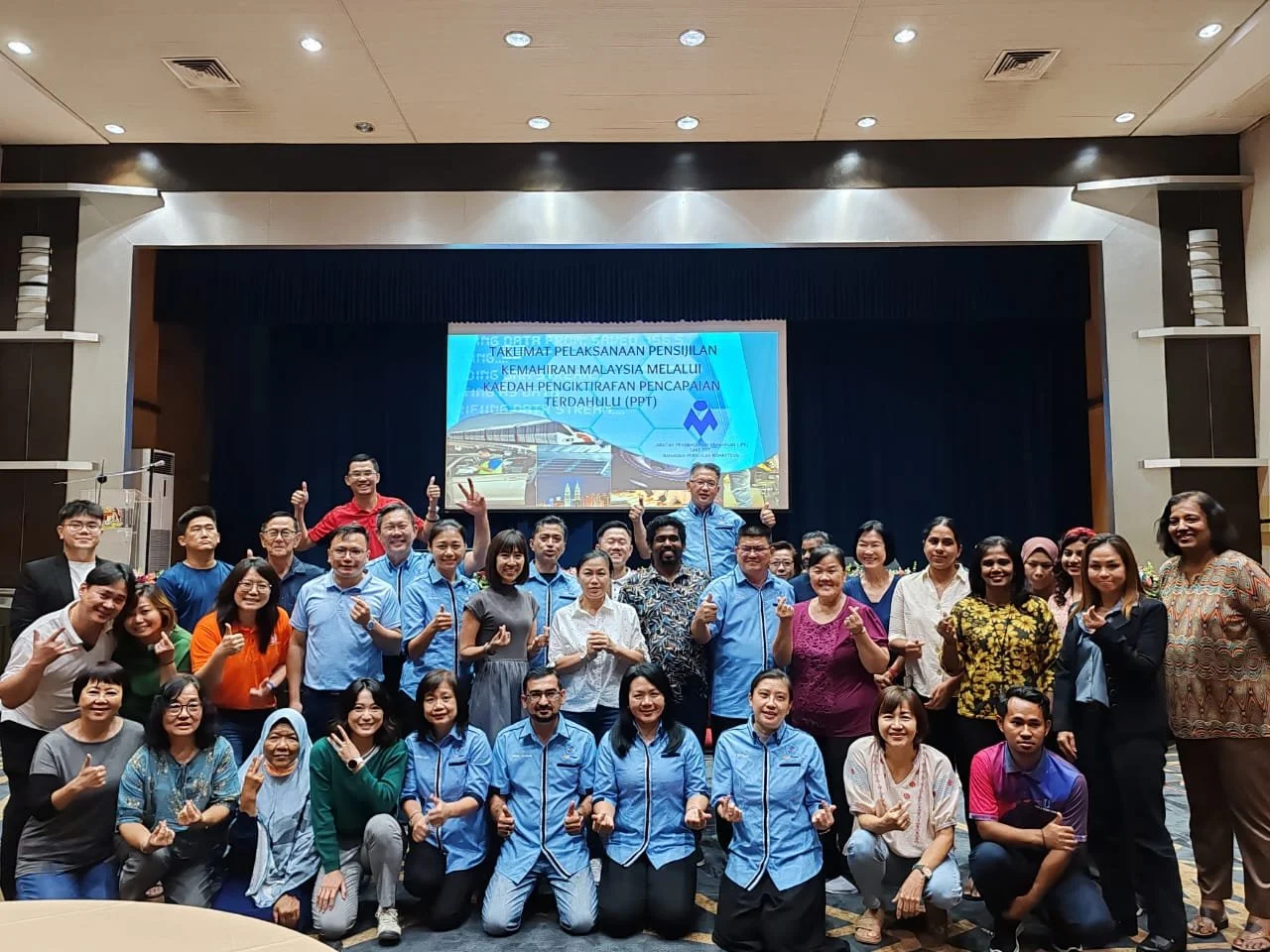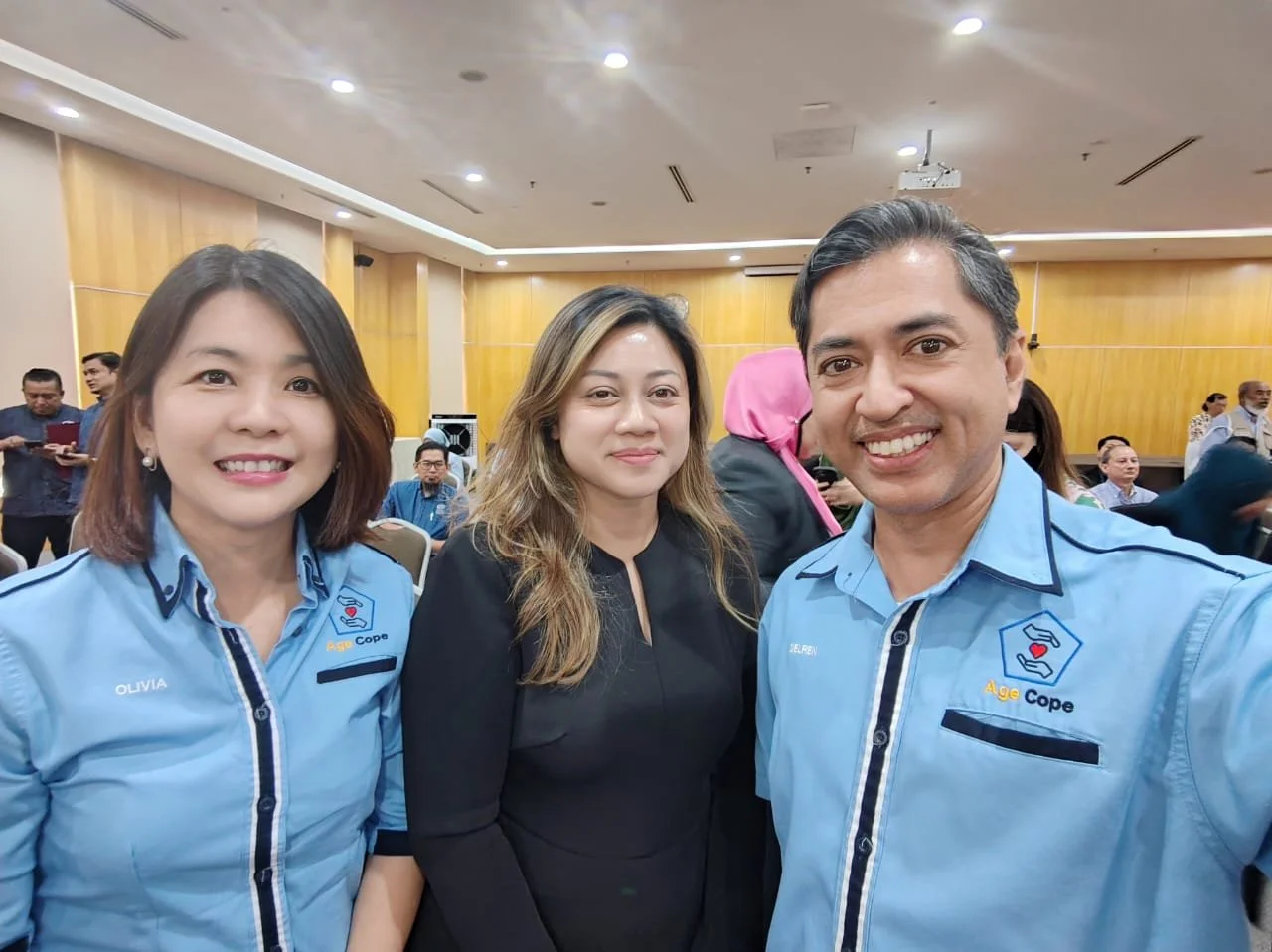Cares Expo Taipei 2025 | Malaysia’s Aged Care Industry on the Brink of Transformation: An Interview with AgeCOPE Management
The elderly population will triple, and so must our care facilities. The time to invest is now—before the market becomes too crowded and too costly to enter. — Delren Douglas, AgeCOPE President
As Malaysia braces for its transition into an aging nation by 2030, the elder care industry stands at a turning point. According to Delren Douglas, President of the Association for Residential Aged Care Operators of Malaysia (AgeCOPE), “The number of elderly in Malaysia is expected to triple in the coming years, and with that, the demand for aged care centers will also triple.”
In other words, Malaysia’s aged care market is currently an “open market,” with plenty of opportunities for newcomers, but it is also on the brink of becoming more standardized and regulated once the Private Aged Healthcare Facilities and Services Act (PAHFAS) comes into force.
Olivia Quah Hooi Pin, Deputy Secretary General of AgeCOPE, agrees. She stresses that while the law is necessary to raise standards, the industry is still waiting for clarity and enforcement. In the meantime, operators are navigating a fragmented system with multiple ministries and local councils setting different requirements.
Delren Douglas (right 1), President of the Association for Residential Aged Care Operators of Malaysia, and Olivia Quah Hooi Pin (right 3), Deputy Secretary General of AgeCOPE. (Source: AgeCOPE)
Triple market growth is expected while the industry fragmented
Douglas explains the numbers driving this urgency. “Currently, Malaysia has around 1.7 million senior citizens aged 60 and above. By 2030, that figure will hit at least 4.5 million—and the latest projections even suggest 5.5 million. That means the elderly population will triple, and even if just 1% of them enter care centers, we will need three times more facilities nationwide.” This expected surge is also compounded by the lack of sufficient licensed operators.
Malaysia’s aged care sector today is made up of a mix of licensed and unlicensed facilities. Two laws govern the industry:
Act 586 (Ministry of Health) governs nursing homes that handle patients needing medical or nursing aid. Currently, there are only 18 facilities nationwide under this law. Act 586 has strict requirements that make new licenses difficult to obtain.
Act 506 (Ministry of Women, Family and Community Development) governs most other care centers, such as residential, assisted living, and daycare services. Around 450 centers are licensed here. Out of an estimated 2,000 centers in the country, only about 450 are formally licensed under the Social Welfare Department, within the Ministry of Women, Family and Community Development. The rest operate in a legal grey zone.
Compared to Act 586, to acquire a license under Act 506 becomes more feasible for elder care operators. However, licensing remains a nightmare. Every local council has different requirements, from rezoning residential homes to expensive fire safety upgrades, including installing sprinkler systems or fire safety upgrades costing upwards of RM50,000. “Even though federal law allows care centers in residential areas, local councils may still demand rezoning or neighbour approvals. One disagreement can stop a center from being licensed,” Douglas says.
Overview of current Elder care service
Currently, most of the elder care centers provide all kinds of Services range from full residential care to short-term stays, daycare, and home care due to the limited number of elder care centers in the country. Care services vary widely in cost. In Kuala Lumpur, monthly fees average RM4,000 to RM5,000, with luxury centers charging up to RM10,000. Outside the city, prices average around RM2,000.
Douglas himself operates three residential care centers, offering long-term stays but also daycare and short-term “holiday relief” stays when families travel. Quah’s model is more integrated: her five-story facility includes a clinic, dementia care showroom, TCM (Traditional Chinese Medicine) rehab, and a government-supported senior club.
Malaysia’s multicultural society adds another layer of complexity. “For Muslim families, food and prayer arrangements are critical. For Chinese and Indian families, other cultural practices take priority. Many families hesitate to place their elderly in centers that don’t align with their cultural or religious expectations,” Douglas explains.
While the government has acknowledged the growing need, direct support for seniors remains minimal. Eligible elderly individuals over 60 from lower-income groups receive a monthly allowance of about RM600, but this amount falls far short of covering care costs, which range from RM2,000 to RM10,000 depending on location and quality of service.
Why PAHFAS matters—and why it’s delayed
PAHFAS, passed in 2018, was designed to unify all aged care centers under the Ministry of Health, raising standards and accountability. Its requirements, however, are extremely stringent:
Staffing: One trained nurse for every four residents in assisted living settings (compared to the current 1:16 ratio).
Upgrading Facilities: Many existing centers would need costly renovations to meet the Ministry of Health’s standards,
Shortage of Nurses: Malaysia already lacks sufficient staff nurses, making the 1:4 requirement difficult to implement.
As a result, PAHFAS has not yet been enforced. “It’s not that we don’t want to comply,” says Douglas. “It’s that 90% of centers are not ready. The cost is too high, and NGOs or small operators cannot afford the upgrades.”
Until implementation, the industry continues to function in a patchwork system. This creates both challenges and opportunities: a relatively open, lightly regulated market for investors, but also uncertainty about future compliance costs.
Despite its challenges, both Douglas and Quah believe PAHFAS is crucial. “We need one standardized law. Otherwise, aged care will remain fragmented and inconsistent,” Douglas insists. The hope is that once enforced, the law will create a more professional, trustworthy sector that attracts larger institutional players.
Rising new demand- home care services
One of the fastest-growing segments is home care. Douglas shares: “In the last two years, I’ve received more requests for my staff to go to elderly homes for just a few hours a day—for bathing, feeding, or companionship. Some families even ask us to send staff to stay overnight in hospitals with their parents.”
Douglas adds that the government is promoting “healthy aging at home,” but he warns that it cannot begin at 60. “Healthy aging has to start in people’s 20s or 30s. By the time you are 60 with multiple health problems, it’s already too late.”
Quah highlights her integrated model as an example of what future senior living could look like: a mix of healthcare, rehabilitation, and social clubs to provide a holistic lifestyle for seniors.
Finally, although still niche, high-end retirement homes are also attracting attention among Malaysia’s wealthiest 20% and even foreign retirees. These facilities currently operate outside any specific act, but there are discussions to bring them under regulation.
Olivia Quah Hooi Pin (right 3), recently visited Cares Expo Taipei 2025, praising the event’s authority and diversity, and expressed interest in organizing a delegation visit to Taiwan in the future, as well as in close collaboration with the organizers.
Cross-country collaboration to address limited manpower
The shortage of trained caregivers is the sector’s biggest bottleneck. Malaysian law currently forbids foreign workers in care centers, limiting the talent pool. “Young Malaysians don’t want these jobs, and without foreign caregivers, the shortage will persist,” Douglas says.
Both leaders welcome international collaboration and want to attract more foreign workers while seeking government’s grants. Quah notes, “If we can set up joint training programs or exchange programs, we can raise the quality of caregiving while giving our staff new skills.”
Beyond training, learning technological and operational methods to reduce manpower workload is what the most of AgeCOPE 300 members want to acquire. “We want to explore automation, digital monitoring tools, and smarter workflows,” Douglas explains. “The goal is not to replace caregivers, but to help them manage more residents effectively without burnout.”
In conclusion: An Open Market on the Verge of Change
The market remains wide open. “Malaysia doesn’t have many large-scale 200-bed centers like in Taiwan or Japan. Probably less than five big operators nationwide that provide 200 beds in Malaysia. If foreign investors come in with expertise and capital, especially through joint ventures, it will be a win-win for both sides,” Douglas says.
Malaysia’s aged care industry is standing at a critical juncture. The demand is skyrocketing, the market is still open, and investors are welcome. But the sector also faces urgent challenges—fragmented laws, high compliance costs, and a caregiver shortage.
For now, the lack of standardized regulation means operators are improvising with innovative models, from integrated clinics to short-term stays and home care services. But with PAHFAS looming, the industry is preparing for a future that is more structured, professional, and investor-friendly.
As Douglas concludes, “The elderly population will triple, and so must our care facilities. The time to invest is now—before the market becomes too crowded and too costly to enter.”
Coming Up Next
In the coming weeks, we will continue to publish insights from ACIF 2025 speakers and international buyers visiting Cares Expo Taipei 2025, sharing their analyses and perspectives on how different countries are responding to the evolving trends in the aging society and care industry.
Through their experiences, we aim to offer readers a broader view of how global collaboration and innovation are shaping the next decade of the care industry.
🚀 Connect with Global Leaders in Aging & Care Innovation!
Sourcingcares links international partners in aging care, long-term care, and health technology, fostering collaboration and driving solutions for a changing world. Our initiatives include Cares Expo Taipei, where the future of elder care takes shape!
🔗 Follow us for insights & opportunities:
📌 Facebook: sourcingcares
📌 LinkedIn: sourcingcares
📍 Explore more at Cares Expo Taipei!




